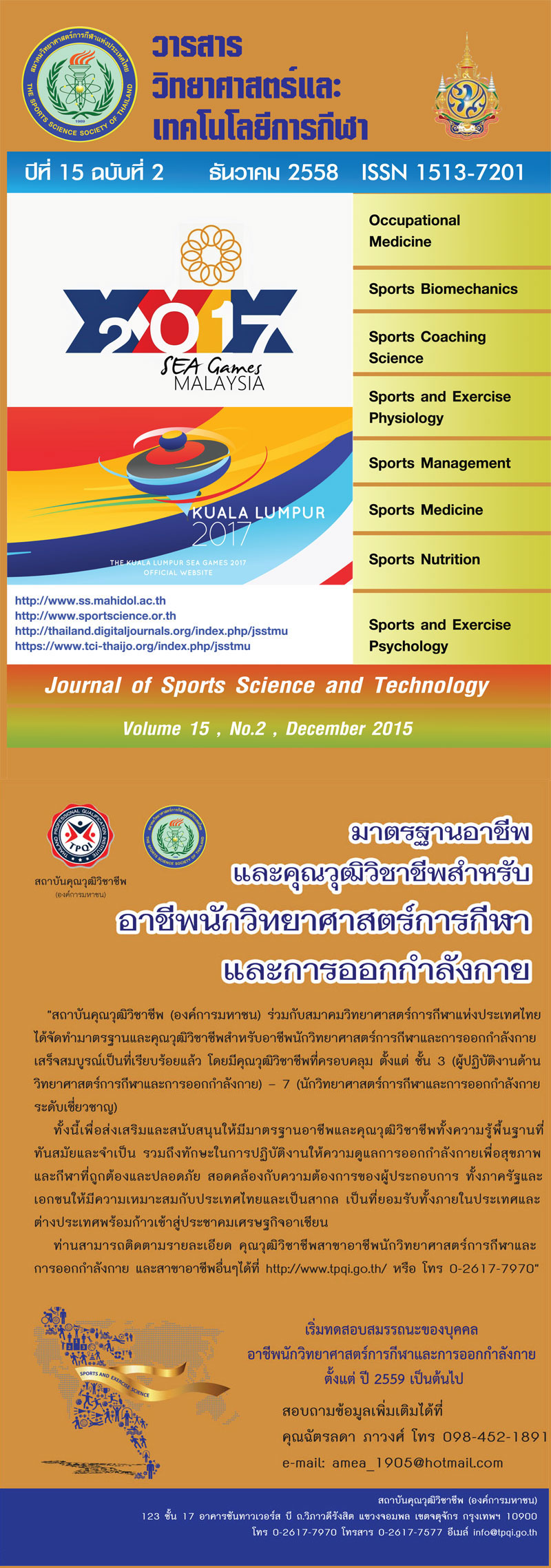A CONSTRUCTION OF TAKRAW SKILLS TEST FOR MATTHAYOMSUKSA 2 STUDENTS SARAWITTAYA SCHOOL
คำสำคัญ:
Skills Test, Takraw, Studentsบทคัดย่อ
The purpose of this research was to construct a Takraw Skills Test for Matthayomsuksa 2 Students in Sarawittaya School. The test consisted of 3 parts: 1) controlling by the back of foot 2) in side foot 3) heading. The content validity was verified by 7 experts. The reliability of the test was conducted by using a test-retest method in one week. The objectivity value was measured by 2 experts. The sample of this study included 40 students (20 male and 20 female students). The sample (490) included 232 male students and 258 female students was used for constructing the measurement criteria. Data analyzed by descriptive statistics (mean and standard deviation) and (Pearson product-moment correlation coefficient)The result of this research showed the content validities and the reliabilities of the Takraw Skills Test consisted of 3 parts: 1) controlling by the back of foot 2) in side foot 3) heading. The content validities were 1.00, 1.00, 0.85. The reliabilities for male students were 0.95, 0.96, 0.90 respectively, and female students were 0.92, 0.95, 0.89 respectively. The objective values for male students were 0.98, 0.97, 0.98 and the objective values for female students were 0.98, 0.95, 0.95. In conclusion, the Takraw Skills Test was appropriate and of high quality, so it is suitable for testing Matthayomsuksa 2 Students both male and female at Sarawittaya School.
(Journal of Sports Science and Technology 2015; 15(2); 81-90)
ดาวน์โหลด
เผยแพร่แล้ว
2015-12-28
รูปแบบการอ้างอิง
1.
GETCHAY P, TUNGTHONGCHAI O, JEARRANAI J. A CONSTRUCTION OF TAKRAW SKILLS TEST FOR MATTHAYOMSUKSA 2 STUDENTS SARAWITTAYA SCHOOL. J Sports Sci Technol [อินเทอร์เน็ต]. 28 ธันวาคม 2015 [อ้างถึง 12 ธันวาคม 2025];15(2):81-90. available at: https://he01.tci-thaijo.org/index.php/JSST/article/view/44937
ฉบับ
ประเภทบทความ
Research Article






